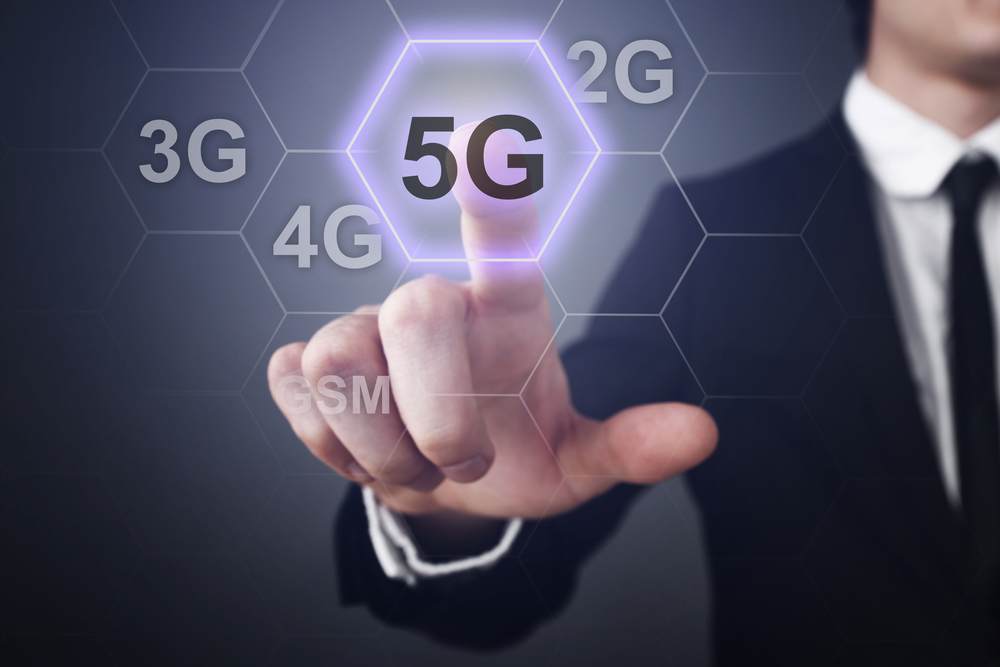Unprecedented, exponential take-up of data and video services, fuelled by social media proliferation and the widespread availability of smartphones, has made 5G inevitable.
Video today contributes to more than 50% of data transferred over 3G/LTE networks and the trends indicate further upward growth.
While LTE held the promise of higher upload and download speeds, these proved to be insufficient for the growing demands of social media and video-centric services.
This has left mobile operators grappling with services requiring high speed and high-data volumes over capacity-stretched networks.
5G is being defined by a new radio access technology in conjunction with multi-layered networks that can handle high throughputs and increased data volumes at very low latency. Latency as low as 1ms and throughputs up to 10 Gbps are expected.
5G was born not only because of the user applications demanding high throughputs and high bandwidth, but also the increasingly popular trends of connected smart devices that will flood global markets in the near future.
With the increase in wearable technology, motion-based sensors, voice command and eye movement sensors, 5G use cases are being driven by low latency and high-reliability requirements of these sensor-connected Internet of Things (IoT) devices.
>See also: Full speed ahead: mapping the road to 5G
When millions of smart devices interact at breakneck gigabit speeds across the network within a millisecond, 5G networks that connect the devices will require extreme scalability and simplified operations with effective feedback/corrective systems. Because of little human interaction, the reliability and availability expectations of IoT networks are very high.
SLA-driven digital services
5G network operators will be challenged by new customer groups – those that deliver hyper-sensored automotives, distant healthcare and smart city development. These consumers of digital network services will have high expectations of quality and push for stringent SLAs and policy control.
Parts or layers of the 5G/IoT network will need to be dedicated to such customers leading operators to use cloud-based automation techniques to deliver the demands of speed and reliability.
5G infrastructure companies are collaborating with communication service providers and research organisations to define the new standards for 5G based on the said use cases.
5G is initially eyeing higher and widely available spectrum bands (5 GHZ – 60 GHz), which offer very short wavelength that can accommodate the implementation of extreme MIMO (Multiple Input – Multiple Output) techniques, i.e. multiple small antennae for increased capacity and speed.
In order to support IoT, the 5G network is expected to support multiple radio interfaces, including low-power narrow-band radio interfaces dedicated to connected objects. To reduce the latency to lower than 1ms, the radio-processing stack will be decentralised to the connected devices.
Because of the short-range propagation of higher spectrum bands to be used initially, it is expected that the design will involve ultra-dense heterogeneous networks that will be orchestrated in real-time by automated systems to manage the end-to-end service performance.
The overall network will be simplified, with many functions disappearing. Backhaul and Core Network will possibly merge, simplifying correlation of data from disparate sources, but troubleshooting QoS issues might become more complicated.
5G promises to evolve communication services providers to digital services providers. Commercially successful digital services will only be possible through high dependency on real-time analytics, providing correlated insights into customer and network behaviour.
>See also: From concept to reality: 5G must avoid 3G’s mistakes
Assuring reliability
Reliability is vital in 5G/IoT networks. The acceptable level of service assurance for most digital, time-critical services is 100% but current management of mobile networks does not assure such high levels of reliability.
Many operator processes will need proactive management and closed-loop automation to reduce delays and increase network reliability.
Insights-driven, customer-centric service level assurance will play a big part in ensuring reliability and the promise of 5G networks.
5G will revolutionise the human lifestyle, with billions of hyper-connected devices communicating with humans and with each other. However, to make these multi-layered superfast networks a reality, operators will need to evolve not just their networks to the next level, but also introduce new techniques of listening and reacting to the network, automating processes and assuring 100% reliability.
Sourced from Sandeep Raina, MYCOM OSI










